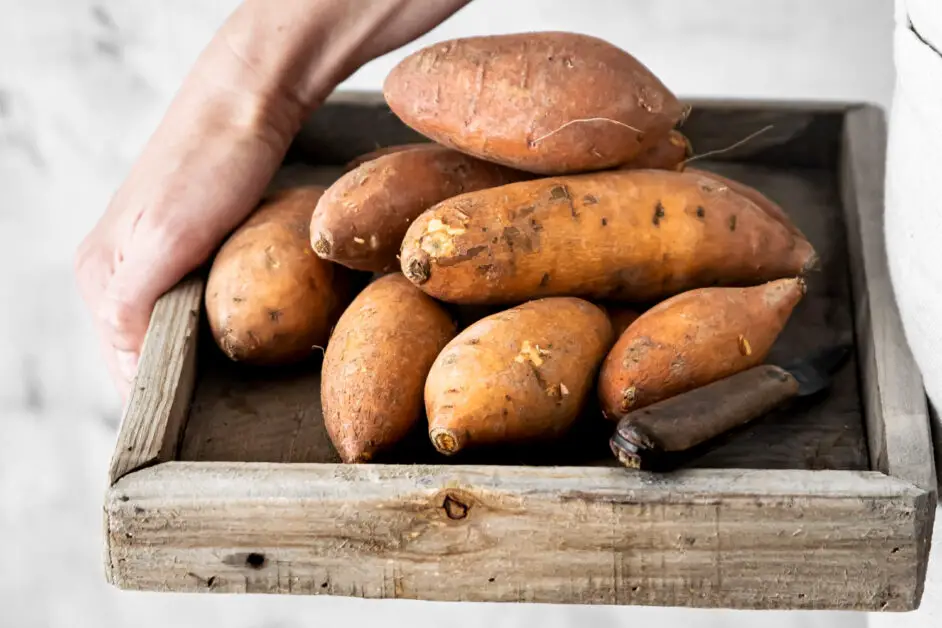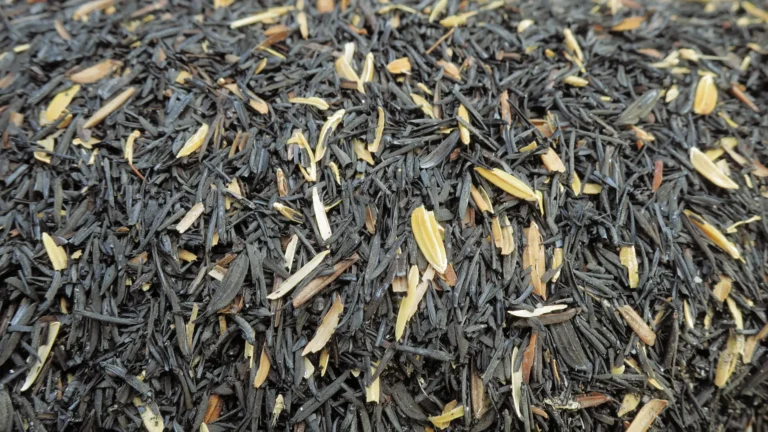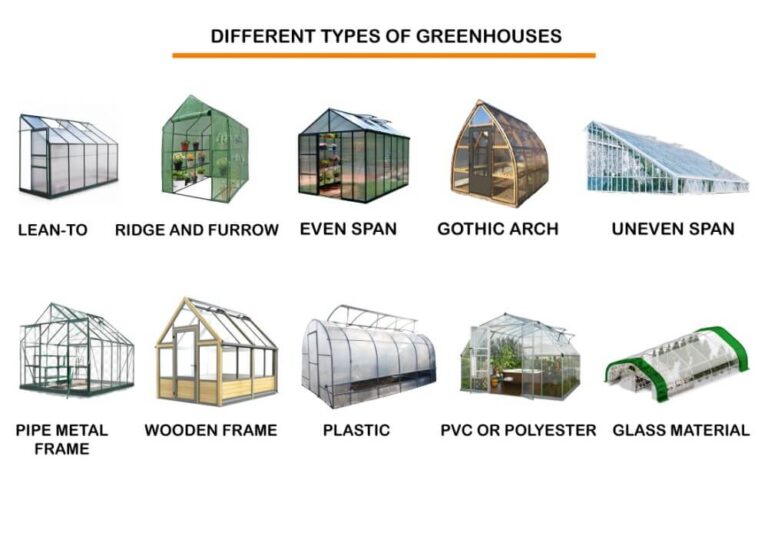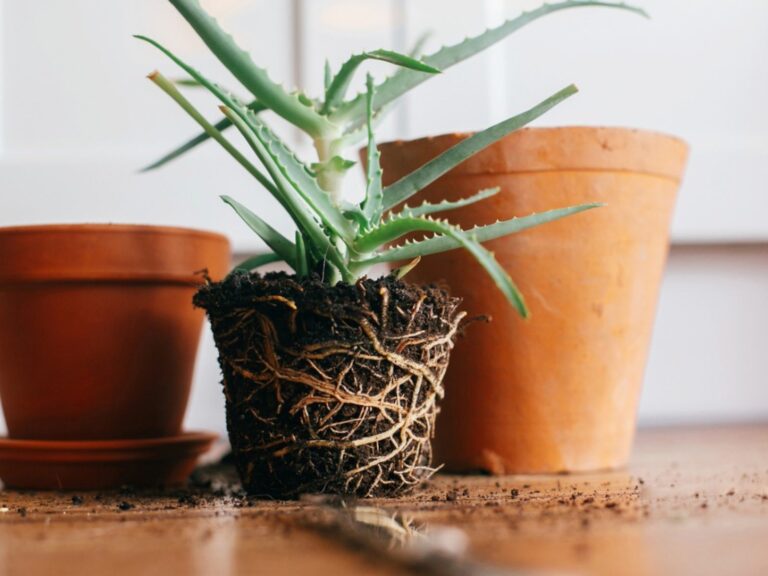How to Cure Sweet Potatoes Properly for Storage
Did you know that curing sweet potatoes can enhance their flavor and extend their shelf life for months? If you’re tired of your sweet potatoes going bad too quickly, you’re not alone. Many home gardeners and cooks overlook this crucial step, but with a little know-how, you can keep your harvest fresh and tasty well into the winter. In this guide, we’ll walk you through the simple process of curing sweet potatoes properly for storage.
From understanding the right conditions to spotting the perfect cure time, we’ve got you covered. Get ready to enjoy delicious, home-grown sweet potatoes whenever you want by mastering this essential technique.
Table of Contents
Understanding the Importance of Properly Curing Sweet Potatoes for Storage
Sweet potatoes are not only a delicious and nutritious crop, but they also have the potential for long-term storage.
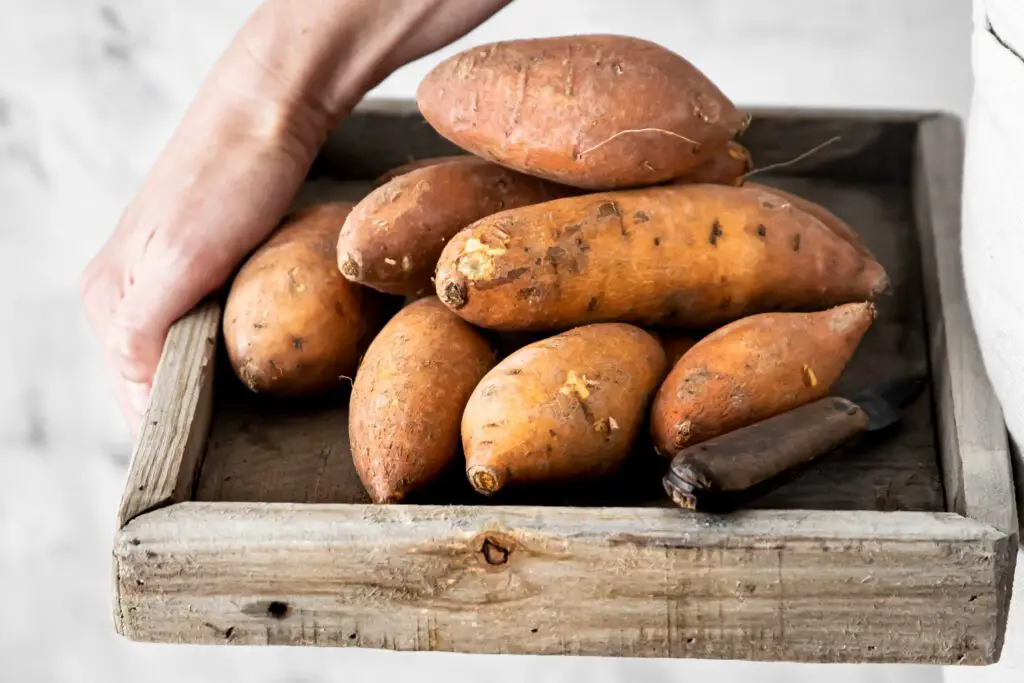
- Ensures Longevity: Properly curing sweet potatoes is essential to keep them in good condition for an extended period.
- Enhances Flavor: The curing process allows sweet potatoes to develop their full flavor profile and acquire the desired texture, making them more enjoyable to eat.
- Prolongs Shelf Life: Curing helps extend the shelf life of sweet potatoes, allowing you to enjoy this versatile vegetable for months after harvest.
- Biochemical Changes: During curing, sweet potatoes undergo biochemical changes that enhance their flavor, sweetness, and overall quality.
- Sugar to Starch Conversion: This crucial step converts natural sugars in sweet potatoes to starches, resulting in a sweeter and creamier taste.
- Promotes Healing: Curing promotes the healing of minor injuries, such as cuts or bruises, that may have occurred during harvesting and handling.
- Optimal Environment: By providing the ideal environment and conditions for these transformations, you ensure your sweet potatoes are at their peak flavor and quality when it’s time to enjoy them.
Selecting the Right Sweet Potatoes for Curing
When it comes to selecting sweet potatoes for curing, it is crucial to understand that not all varieties are suitable for this process.

- Maturity: Choose sweet potatoes that have reached their peak maturity but are not yet showing signs of decay or damage. Maturity ensures better flavor and texture during storage.
- Skin Condition: Opt for sweet potatoes with a firm and smooth skin. Avoid those with bruises, cuts, or other damage, as they may not cure properly.
- Color and Appearance: Look for vibrant-colored sweet potatoes with a healthy appearance. Bright orange or purple hues indicate freshness and nutritional value.
- Size: Avoid selecting sweet potatoes that are too small or too large. Properly sized sweet potatoes will cure more effectively and are less likely to develop rot.
- Source: If possible, choose sweet potatoes from your own garden or a local farm . This allows you to ensure they were harvested at the right time. If purchasing from a store, seek detailed information about their origin and freshness.
By choosing sweet potatoes from trusted sources, you can have more confidence in their quality and suitability for the curing process.
Cleaning and Preparing Sweet Potatoes for Curing
To ensure that your sweet potatoes are properly cured and preserved for long-term storage, it is crucial to start with a thorough cleaning and preparation process. Cleaning the sweet potatoes removes any dirt, debris, or excess moisture that can promote decay and spoilage during the curing process.
By following these steps, you’ll enhance the chances of maintaining the quality and flavor of your sweet potatoes during storage.Next, we will discuss creating the ideal curing environment to maximize the preservation of your sweet potatoes. Happy curing! 🍠🌱
Creating the Ideal Curing Environment
Creating the ideal curing environment is a crucial step in ensuring the long-term storage of sweet potatoes. This process allows the roots to develop their maximum flavor and sweetness while extending their shelf life. To create the perfect environment, you will need to consider temperature, humidity, and airflow.
- Consistent Temperature: Maintain a consistent temperature of 80 to 85°F (27 to 29°C) during the curing period.
- Moderate Warmth: This temperature range helps convert stored starches into sugars, enhancing taste and texture.
- Avoid Fluctuations: Extreme temperature changes can damage the roots and affect the curing process.
- Humidity Control: Ensure the curing environment has a relative humidity level of 85 to 90%.
- Sufficient Moisture: Adequate humidity prevents the roots from drying out too quickly, allowing for full flavor development.
- Prevent Mold and Decay: Proper humidity levels help avoid mold and decay-causing microorganisms.
- Adequate Airflow: Ensure proper ventilation in the curing area.
- Prevent Excess Moisture: Good airflow prevents the accumulation of moisture, which can cause rot or off-flavors.
- Improve Circulation: Use fans or open windows to allow a gentle breeze for better air circulation.
By creating an environment that optimizes temperature, humidity, and airflow, you are setting the stage for a successful sweet potato curing process. The next step involves allowing sufficient time for the curing to take place, allowing the flavors to develop fully. Let’s explore this crucial aspect further.
Controlling Temperature and Humidity during the Curing Process
Properly controlling the temperature and humidity during the curing process is crucial for the successful preservation of sweet potatoes. Maintaining the right conditions ensures that the potatoes develop their characteristic sweetness, texture, and taste while preventing spoilage.
- Temperature:
- The ideal temperature range for curing sweet potatoes is between 80 and 85 degrees Fahrenheit (27 to 29 degrees Celsius).
- This warmth allows enzymes within the potatoes to convert excess starches into desirable sugars, enhancing flavor.
- Consistently monitor the temperature during curing to maintain optimal conditions.
- Fluctuations or extreme temperatures can negatively impact sweet potato quality.
- Humidity:
- Sweet potatoes require high humidity, typically ranging between 85% and 90%.
- Adequate moisture prevents the outer skin from drying too quickly.
- Gradual conversion of starches into sugars occurs in this moist environment.
- Insufficient humidity leads to shriveled or discolored potatoes, while excess humidity can cause mold or bacterial growth.
- Ventilation and Moisture Control:
- Proper ventilation is essential to maintain desired humidity levels.
- Prevent excess moisture accumulation within the curing area.
- Achieving the right temperature and humidity ensures flavorful, high-quality sweet potatoes.
Happy sweet potato curing! 🍠🌱
| Aspect | Importance | Optimal Conditions |
| Temperature | Crucial for enzymatic conversion of starches to sugars | Maintain 80-85°F (27-29°C) consistently |
| Temperature Fluctuations | Can negatively impact sweetness and quality | Avoid extremes and monitor consistently |
| Humidity | Essential for preventing outer skin from drying too quickly | Maintain 85-90% humidity |
| Insufficient Humidity | May result in shriveled or discolored potatoes | Ensure proper moisture for gradual curing |
| Excessive Humidity | Can promote mold or bacterial growth | Provide ventilation and moisture control |
| Ventilation and Moisture Control | Critical to prevent excess moisture accumulation | Ensure proper airflow and humidity control |
Review: Humidity and Temperature Monitor
In my gardening endeavors, precision is paramount, especially during crucial processes like curing and nurturing plants. This Humidity and Temperature Monitor has been an absolute game-changer, offering precise insights into my greenhouse environment.
This monitor has become my go-to tool for maintaining optimal conditions during the curing process. It ensures that humidity and temperature levels stay within the ideal range, resulting in consistently high-quality yields with preserved potency and flavor.
Beyond curing, this monitor proves its worth in various gardening tasks. From germinating seeds to nurturing seedlings and tending to mature plants, having accurate environmental data at my disposal allows me to tailor my care routines for optimal growth and health.
The monitor’s user-friendly design makes it easy to use, with a large display that provides clear readings at a glance. Its durability ensures it can withstand the demands of daily use in a gardening environment.
Overall, this Humidity and Temperature Monitor has become an indispensable tool in my gardening arsenal, empowering me to create the perfect growing conditions for my plants and maximize my yields.
- Accurate Readings: The monitor provides precise measurements of both humidity and temperature, allowing for informed decision-making.
- Large Display: The clear and easy-to-read display makes it effortless to check current conditions at a glance.
- Versatility: Suitable for use in various settings, including greenhouses, indoor gardens, and home environments.
- Compact Design: The compact size of the monitor allows for convenient placement anywhere in the greenhouse.
- Battery-powered: Runs on batteries, eliminating the need for cumbersome cords and ensuring uninterrupted monitoring.
- Limited Features: While effective for basic monitoring, the device lacks advanced features such as data logging or wireless connectivity.
- No Alerts: The monitor does not offer alert notifications for extreme temperature or humidity levels, requiring manual checks.
Allowing Sufficient Time for Curing Sweet Potatoes
Sweet potatoes require an adequate amount of time for proper curing, as this process is crucial for extending their shelf life and preserving their taste and quality. The duration of curing will vary depending on several factors such as the variety of sweet potatoes, the climate, and the desired storage period.

- Curing Duration: Cure sweet potatoes for a minimum of 10 to 14 days.
- Time for Starch Conversion: This period allows starches within the tubers to convert into sugars.
- Flavor and Sweetness: Curing enhances both the flavor and sweetness of sweet potatoes.
- Chemical Changes: Complex carbohydrates convert into simple sugars, contributing to the sweet taste.
- Texture Improvement: Curing improves the overall texture of the sweet potatoes.
- Healing Process: Curing helps heal wounds or cuts on the skin of the sweet potatoes.
- Skin Thickening: The skin thickens and toughens, creating a protective barrier against moisture loss and bacteria.
- Extended Storage Life: This protective barrier helps extend the storage life of the sweet potatoes.
- Importance of Full Curing: Cutting short the curing process can lead to:
- Inferior Taste: The sweet potatoes may have a less appealing flavor.
- Decreased Quality: Overall quality is compromised.
- Shorter Storage Life: Sweet potatoes won’t last as long if not properly cured.
- Maximizing Benefits: Allowing sufficient time for proper curing is crucial for maximizing flavor, quality, and storage life of sweet potatoes.
Monitoring the Progress of the Curing Process
Monitoring the progress of the curing process is crucial to ensure that sweet potatoes are properly cured and ready for long-term storage. This step requires careful observation and attention to detail, as it helps determine the optimal time for the curing process to be completed.

- Visual Cues:
- Regularly check the appearance and texture of the sweet potatoes.
- As curing progresses, the skins should thicken and become tougher.
- Look for a slightly glossy sheen on the outer layer.
- These visual cues indicate that the sweet potatoes are absorbing moisture and are on their way to being properly cured.
- Aroma Assessment:
- Pay attention to the aroma during curing.
- Chemical changes occur, resulting in desirable flavors and aromas.
- A sweet, earthy scent is a positive sign of progress.
- Foul or unpleasant odors may indicate issues with the curing process.
Monitoring the progress of the curing process ensures that the sweet potatoes are reaching their full potential in terms of flavor, texture, and long-term storage capability. By paying close attention to visual and olfactory cues, gardeners can ensure that their harvested sweet potatoes are properly cured and ready to be enjoyed for months to come.
Recognizing When Sweet Potatoes are Fully Cured
Recognizing when sweet potatoes are fully cured is essential to their long-term storage and enjoyment. Curing is a crucial step in the process of preparing sweet potatoes for storage, as it allows them to develop their distinctive flavor and sweetness. When sweet potatoes are fully cured, they will have undergone certain physiological changes that indicate they are ready for long-term storage.
- Firm Skin: Fully cured sweet potatoes have a firm skin and a hardened exterior.
- Protective Layer: The curing process develops a protective layer that helps prevent moisture loss and decay.
- Smooth Texture: The skin should be smooth and relatively free from blemishes or cuts.
- Solid Feel: When gently pressed, fully cured sweet potatoes will feel solid and not give in easily to pressure.
- Aromatic Indicator: Fully cured sweet potatoes emit a sweet and earthy scent.
- Flavor Development: This aroma signals that the flavors have developed and intensified.
Preparing Sweet Potatoes for Long-Term Storage
Preparing sweet potatoes for long-term storage is an essential step to ensure their freshness and quality over an extended period.
- Gentle Handling: Handle sweet potatoes with care after harvesting to prevent damage.
- Remove Dirt: Gently remove excess dirt or debris without bruising or scratching the skin.
- Curing Preparation: Properly cure sweet potatoes to enhance flavor, sweetness, and texture.
- Healing Wounds: Curing promotes the healing of any surface wounds or cuts.
- Curing Process: Store sweet potatoes in a warm and humid environment.
- Ideal Conditions: Ensure a temperature of 80 to 85°F (27 to 29°C) and 85 to 90% humidity for 10 to 14 days.
- Maximize Shelf Life: Follow these steps diligently to prepare sweet potatoes for long-term storage.
- Maintain Taste and Nutrition: Proper preparation helps retain their taste and nutritional value.
- Enjoy Months Later: This ensures you can enjoy delicious sweet potatoes even months after the harvest.
Choosing the Right Storage Containers for Sweet Potatoes
When it comes to choosing the right storage containers for sweet potatoes, there are a few key factors to consider.
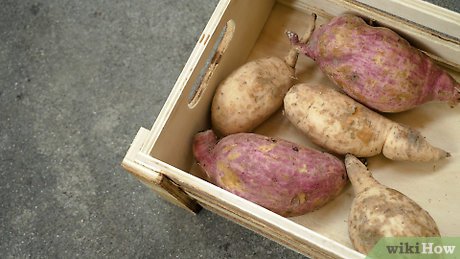
- Good Insulation: Choose containers that provide good insulation to maintain a consistent temperature.
- Prevent Fluctuations: Insulation helps prevent temperature fluctuations that could cause spoilage.
- Material: Containers made of wood are ideal due to their natural insulation properties.
- Proper Ventilation: Ensure containers allow for adequate airflow.
- Prevent Moisture Buildup: Proper ventilation helps prevent moisture buildup, reducing the risk of rotting.
- Design: Opt for containers with slatted sides or perforated lids to ensure adequate ventilation.
- Appropriate Size: Select containers that fit the harvest comfortably.
- Avoid Excess Space: Containers that are too large may not maintain necessary humidity levels due to excess empty space.
- Optimal Conditions: Choose containers that are just the right size to ensure optimal storage conditions for sweet potatoes.
Storing Sweet Potatoes in a Cool and Dark Place
When it comes to storing sweet potatoes, ensuring the right conditions are essential for maintaining their quality and extending their shelf life.
- Cool and Dark Place: Store sweet potatoes in a cool, dark location to prevent sprouting and green patches.
- Ideal Temperature: Keep the temperature consistently around 50 to 60°F (10 to 15°C).
- Effect of Light: Light exposure can compromise taste and nutritional value.
- Consistent Cool Environment: A cool environment slows down the natural decay process and preserves texture and flavor.
- Ideal Locations: Basements, cellars, cool pantries, or storage areas away from direct sunlight are suitable options.
- Ventilation: Ensure the storage area is well-ventilated to prevent excessive moisture buildup and rotting.
- Avoid Light and Temperature Fluctuations: Prevent exposure to light and fluctuating temperatures to avoid hastening spoilage.
- Promote Longevity: Providing a cool, dark, and well-ventilated environment promotes the longevity and quality of sweet potatoes.
Following these storage guidelines will allow you to enjoy the delicious results of properly cured sweet potatoes for an extended period.
Avoiding Common Mistakes in Sweet Potato Storage
When it comes to storing sweet potatoes, avoiding common mistakes is crucial to ensure that they stay fresh and delicious for as long as possible.
- Proper Cleaning: Gently brush off any dirt or debris from sweet potatoes before storage.
- Avoid Damage: Be careful not to damage the skin to prevent bacterial growth and spoilage.
- Breathable Containers: Choose storage containers that allow for ventilation to prevent moisture buildup.
- Suitable Options: Use baskets, burlap bags, or cardboard boxes with ventilation holes.
- Avoid Plastic Bags: Do not use plastic bags or airtight containers as they create a humid environment, encouraging moisture and mold growth.
By being mindful of these common mistakes and taking the necessary steps to prevent them, you can ensure that your sweet potatoes stay fresh and flavorful for an extended period of time. Proper storage is key in preserving the quality of your harvest, allowing you to enjoy the delicious results of your hard work throughout the year.
| Common Mistake | Recommendations |
| Not Cleaning Sweet Potatoes | Gently brush off dirt and debris to prevent bacterial growth; avoid damaging the skin. |
| Wrong Storage Containers | Use breathable containers like baskets, burlap bags, or cardboard boxes with ventilation holes. |
| Plastic Bags or Airtight Containers | Avoid using plastic bags or airtight containers, as they can create a humid environment promoting moisture and mold growth. |
The Burlap Potato Sacks have been a game-changer in my sweet potato storage process. After curing my harvest, I needed a reliable solution to keep them fresh for as long as possible, and these sacks delivered.
The durable burlap material provides excellent protection while allowing sufficient air circulation, preventing moisture buildup and extending the shelf life of my sweet potatoes. I appreciate the eco-friendly aspect of these sacks, knowing that they are biodegradable and won’t harm the environment.
I found the size to be just right for storing a decent quantity of sweet potatoes, and the sacks have proven to be versatile for other gardening and storage needs as well.
While they may not offer complete waterproofing, I’ve had no issues with moisture affecting my stored produce as long as I keep them in a dry environment. Plus, any concerns about potential odors were easily mitigated by airing out the sacks before use.
Overall, these burlap potato sacks have been a reliable and practical solution for storing my cured sweet potatoes, and I highly recommend them to any gardener or homesteader looking for a sustainable storage option.
✅ Breathable: The natural fibers of burlap allow air circulation, preventing moisture buildup and extending the shelf life of stored produce.
✅ Eco-friendly: Burlap is a biodegradable material, making it an environmentally friendly choice for packaging and storage.
✅ Versatile: Apart from storing sweet potatoes, these sacks can also be used for various other gardening and storage purposes.
✅ Size Options: Available in a convenient 22-inch size, suitable for storing a moderate quantity of sweet potatoes.
❌ Prone to Odors: Burlap can absorb and retain odors, which may transfer to stored produce if not properly aired out or cleaned.
❌ Potential Wear and Tear: Over time, the burlap material may show signs of wear and tear, especially with frequent use or exposure to harsh conditions.
Inspecting and Sorting Sweet Potatoes before Consumption
Inspecting and sorting sweet potatoes before consumption is an essential step to ensure that you’re enjoying the best quality and flavor from your harvest. Before indulging in these delicious tubers, take a moment to assess their condition and make certain they meet your standards.
- Visual Inspection: Begin by visually inspecting the sweet potatoes for any signs of damage or decay.
- Look for Soft Spots, Mold, or Blemishes: Check the skin for any imperfections that may indicate spoilage.
- Check for Sprouting or Wrinkling: These signs suggest that the sweet potatoes are past their prime and should be discarded.
- Evaluate Size and Shape: Assess the size and shape of the sweet potatoes.
- Irregularities in Shape: Some shape irregularities are normal, but ensure they are within a desirable size range.
- Uniform Size: Aim for sweet potatoes that are generally uniform in size for even cooking and consistent taste.
- Remove Overly Large or Small Sweet Potatoes: This helps maintain a consistent texture and flavor profile when consuming them.
Enjoying the Delicious Results of Properly Cured Sweet Potatoes
After weeks of proper curing, sweet potatoes are finally ready to be enjoyed. The delicious results of this carefully executed process are worth the wait. When properly cured, sweet potatoes develop a rich, sweet flavor and a smooth, creamy texture that is irresistible.

- Roasting Sweet Potatoes: Enjoy the deliciousness of properly cured sweet potatoes by roasting them.
- Enhanced Flavor: Roasting brings out their natural sweetness and enhances their flavors.
- Preparation: Preheat the oven to 400°F (200°C) and place whole sweet potatoes on a baking sheet.
- Piercing: Pierce them with a fork to allow steam to escape.
- Roasting Time: Roast for about 45 minutes to an hour until tender and caramelized on the outside.
- Versatile Dish: Enjoy roasted sweet potatoes as a side, main course, or in salads and soups.
- Mashing Sweet Potatoes: Another delightful way to savor properly cured sweet potatoes is by mashing them.
- Creamy Texture: Sweet potatoes have a creamy texture and natural sweetness, perfect for mashing.
- Preparation: Boil peeled and cubed sweet potatoes until soft and easily mashed with a fork.
- Seasoning: Drain well and add milk, butter, and salt to taste, then mash until smooth and creamy.
- Versatile Side Dish: Sweet potato mash pairs well with roasted meats, grilled vegetables, or as a satisfying vegetarian option.
Whether roasted, mashed, or prepared in any other culinary creation, properly cured sweet potatoes are guaranteed to bring immense satisfaction to your taste buds. Their enhanced flavor and irresistible texture make them a delightful addition to any meal. So take the time to properly cure your sweet potatoes and reap the rewards of their deliciousness.
Watch more about how to cure sweet potatoes properly for storage in the given video:
FAQ
Why is it important to properly cure sweet potatoes for storage?
Properly curing sweet potatoes helps improve their flavor, texture, and overall quality. It also extends their shelf life and prevents spoilage.
How do I select the right sweet potatoes for curing?
Look for sweet potatoes with smooth, unblemished skins and avoid ones with soft spots or signs of decay. Choose mature sweet potatoes that have been harvested and cured properly.
What is the ideal curing environment for sweet potatoes?
Sweet potatoes should be cured in a warm and humid environment, ideally around 85-90 degrees Fahrenheit with 85-90% humidity. This allows them to develop their natural sugars and heal any cuts or bruises.
How long should I cure sweet potatoes?
Sweet potatoes should be cured for approximately 10-14 days to ensure they reach their full flavor potential and have proper storage qualities.
Can I store cured sweet potatoes in any type of container?
It is best to store cured sweet potatoes in well-ventilated containers, such as crates or baskets, to allow for proper air circulation and prevent moisture buildup.
Where should I store cured sweet potatoes for long-term storage?
Sweet potatoes should be stored in a cool (55-60 degrees Fahrenheit), dark, and dry place, such as a basement or pantry, to prevent them from sprouting or rotting.
What common mistakes should I avoid when storing sweet potatoes?
Avoid storing sweet potatoes in the refrigerator, as the cold temperatures can negatively affect their flavor and texture. Additionally, do not wash sweet potatoes before storing them, as moisture can lead to spoilage.
How can I inspect and sort sweet potatoes before consumption?
Before consuming, inspect sweet potatoes for any signs of decay, mold, or sprouting. Sort out any damaged or spoiled sweet potatoes to ensure only the best ones are used.
How do I know if sweet potatoes are fully cured?
Sweet potatoes are fully cured when their skins have hardened, their flesh has become sweet and flavorful, and they have gone through the recommended curing time of 10-14 days.
What are the benefits of properly cured sweet potatoes?
Properly cured sweet potatoes offer enhanced flavor, improved texture, and a longer shelf life. They are also easier to cook with and can be enjoyed in various delicious recipes.

Studied Agricultural Engineering-Plant Protection at University of California, Davis.
Head of Content writing team at Southelmontehydroponics.com

